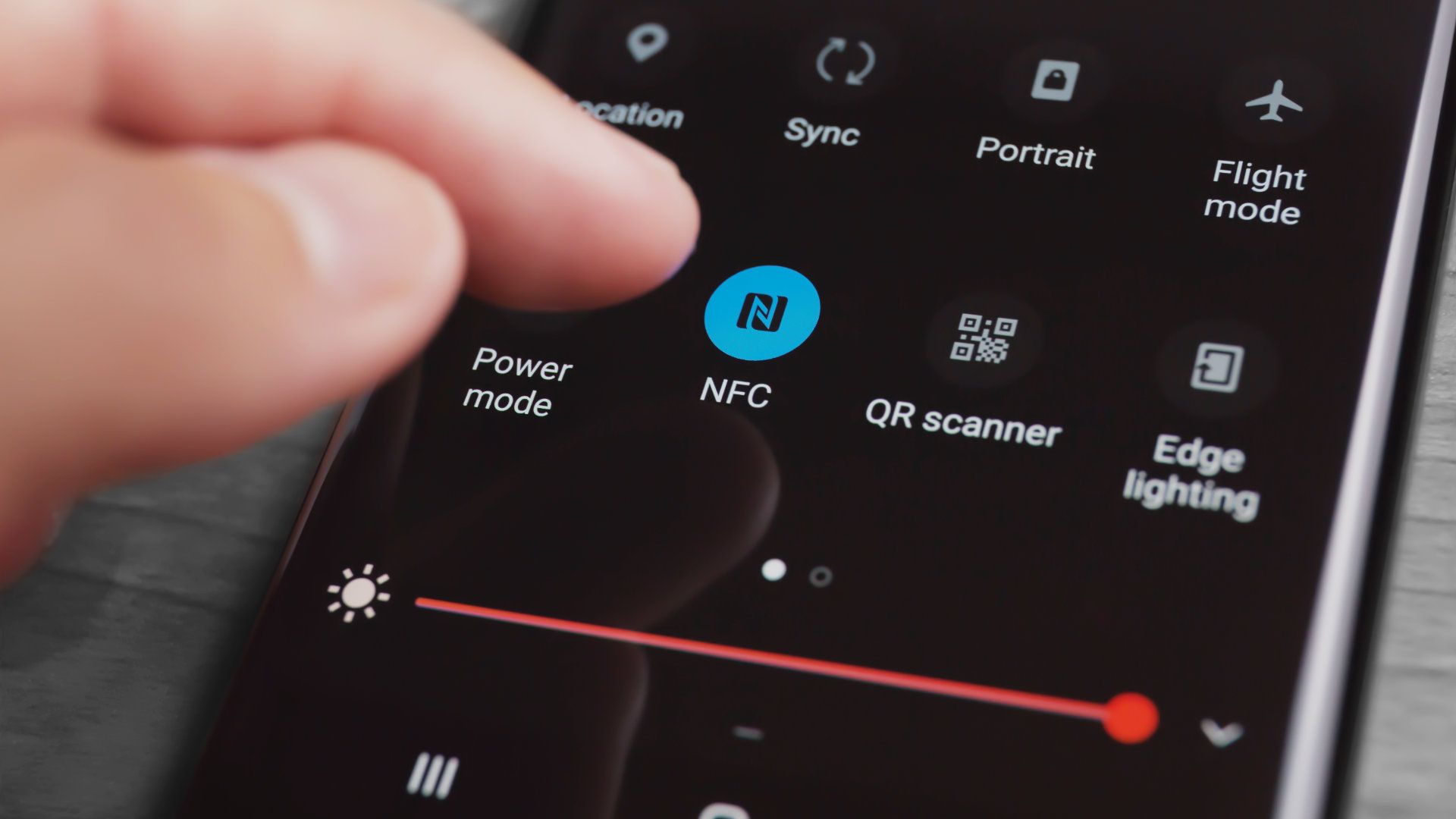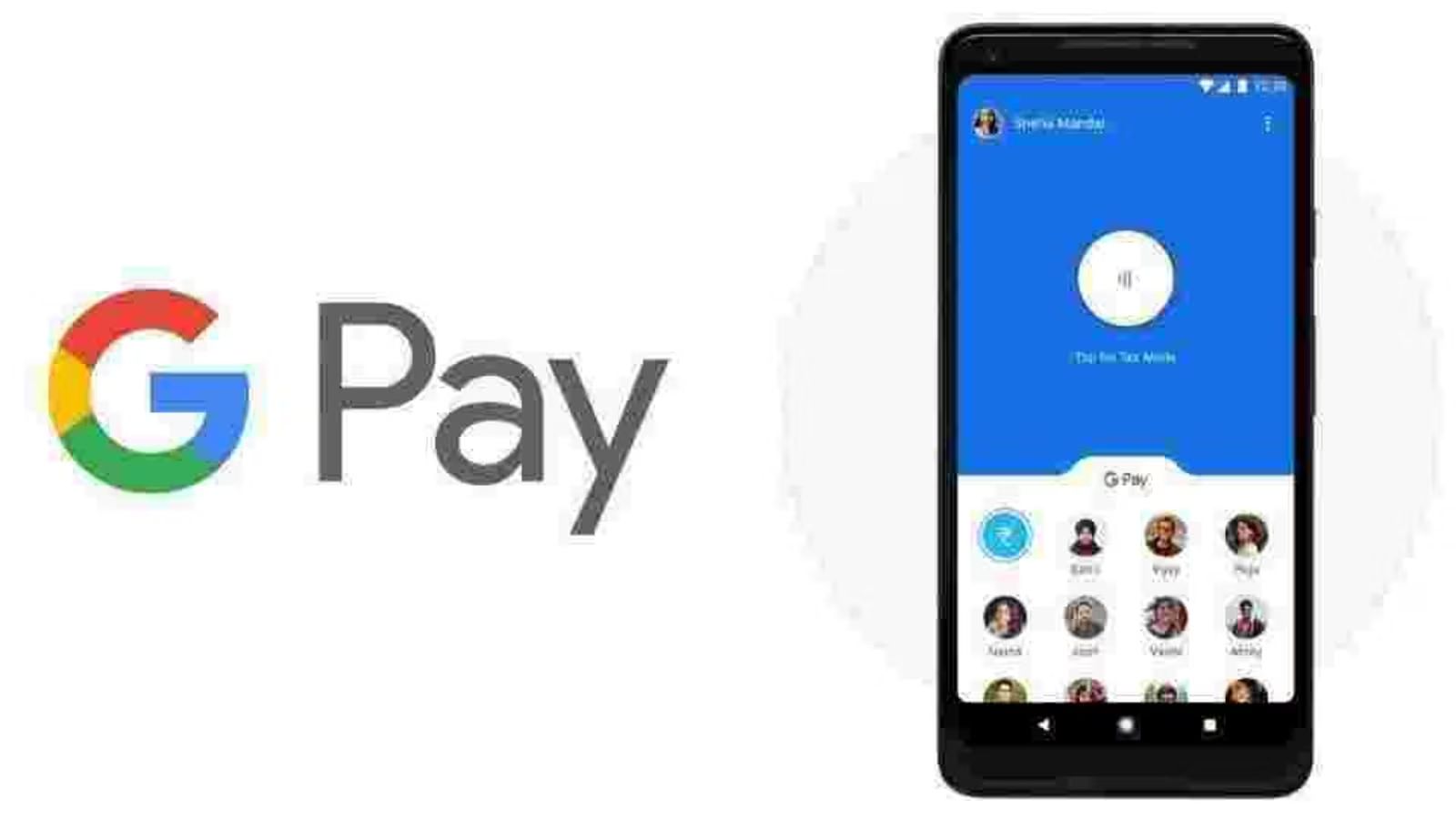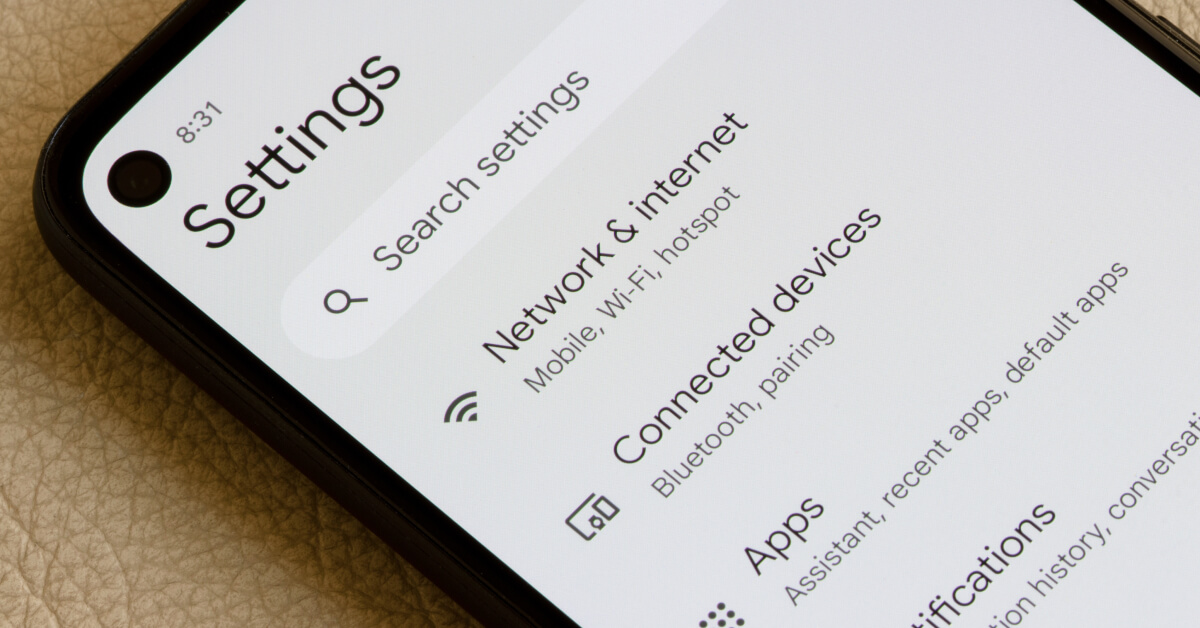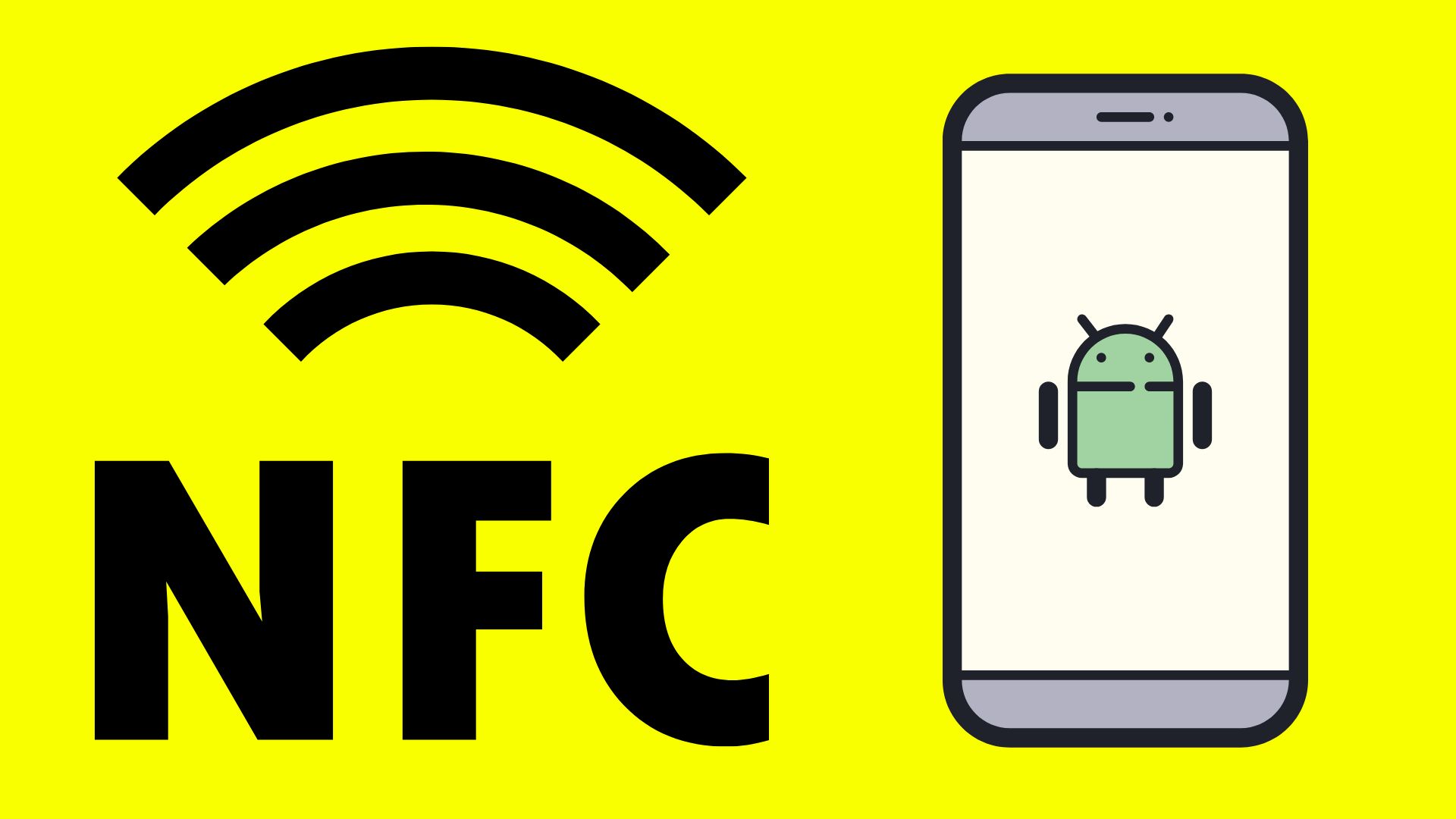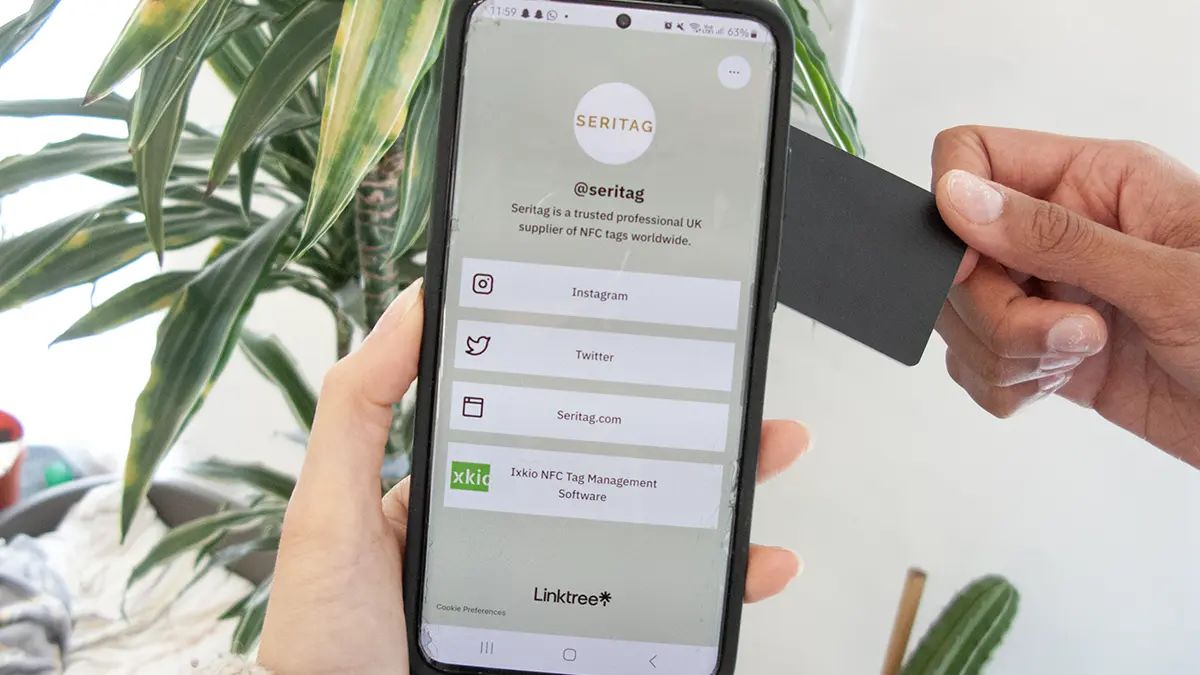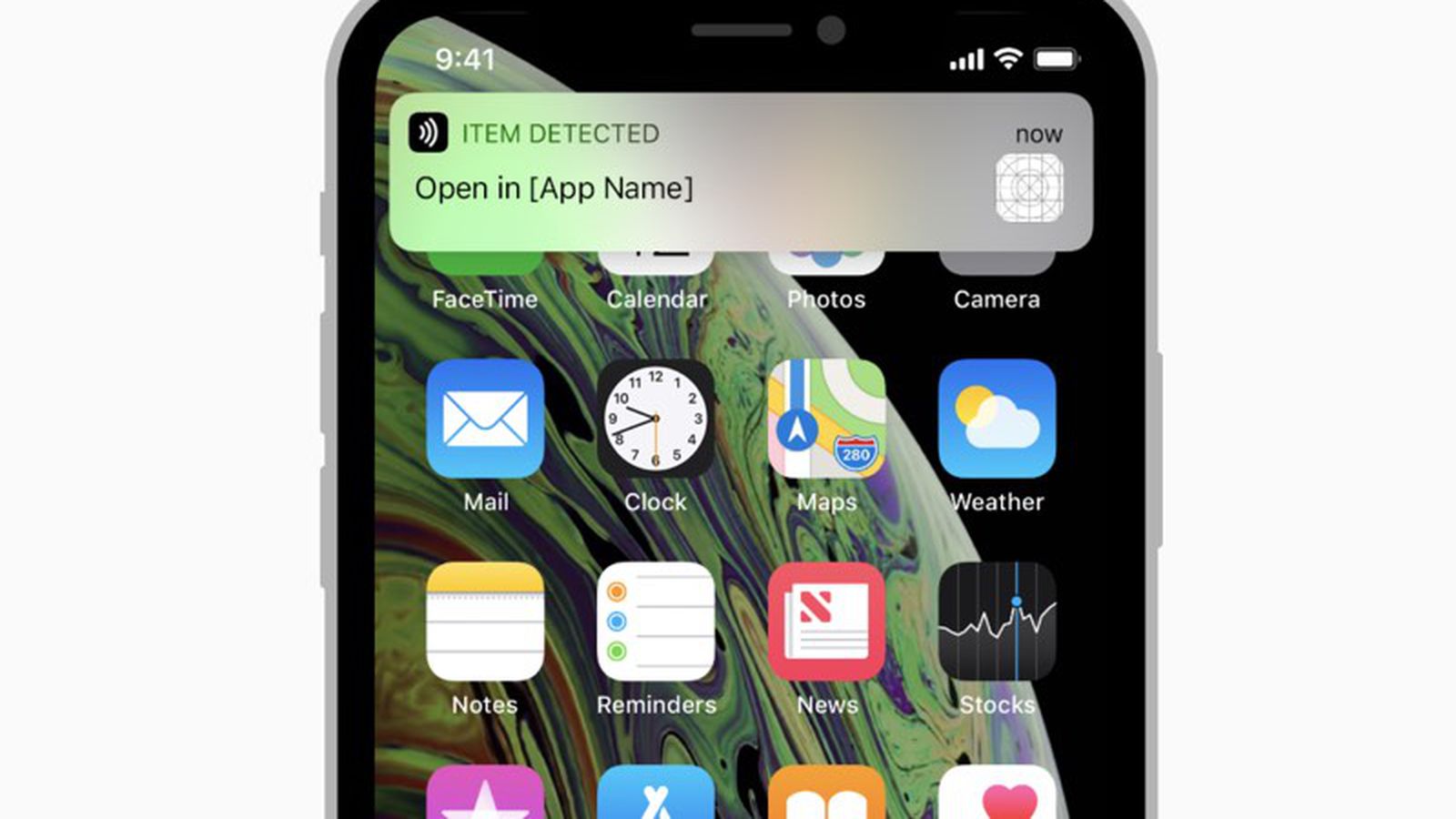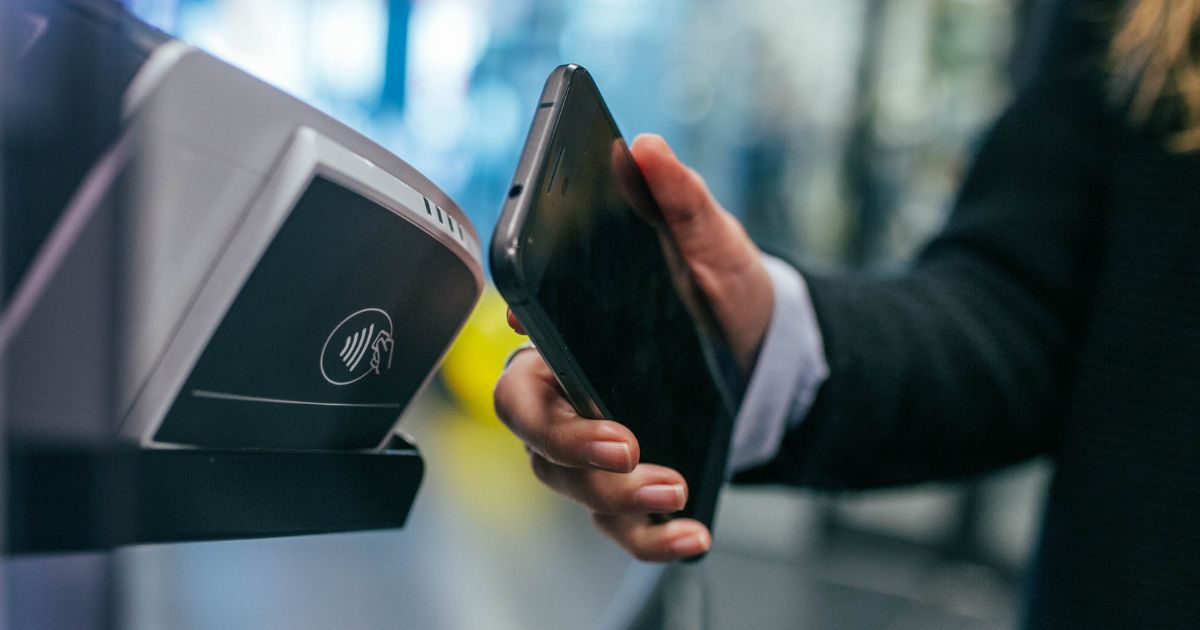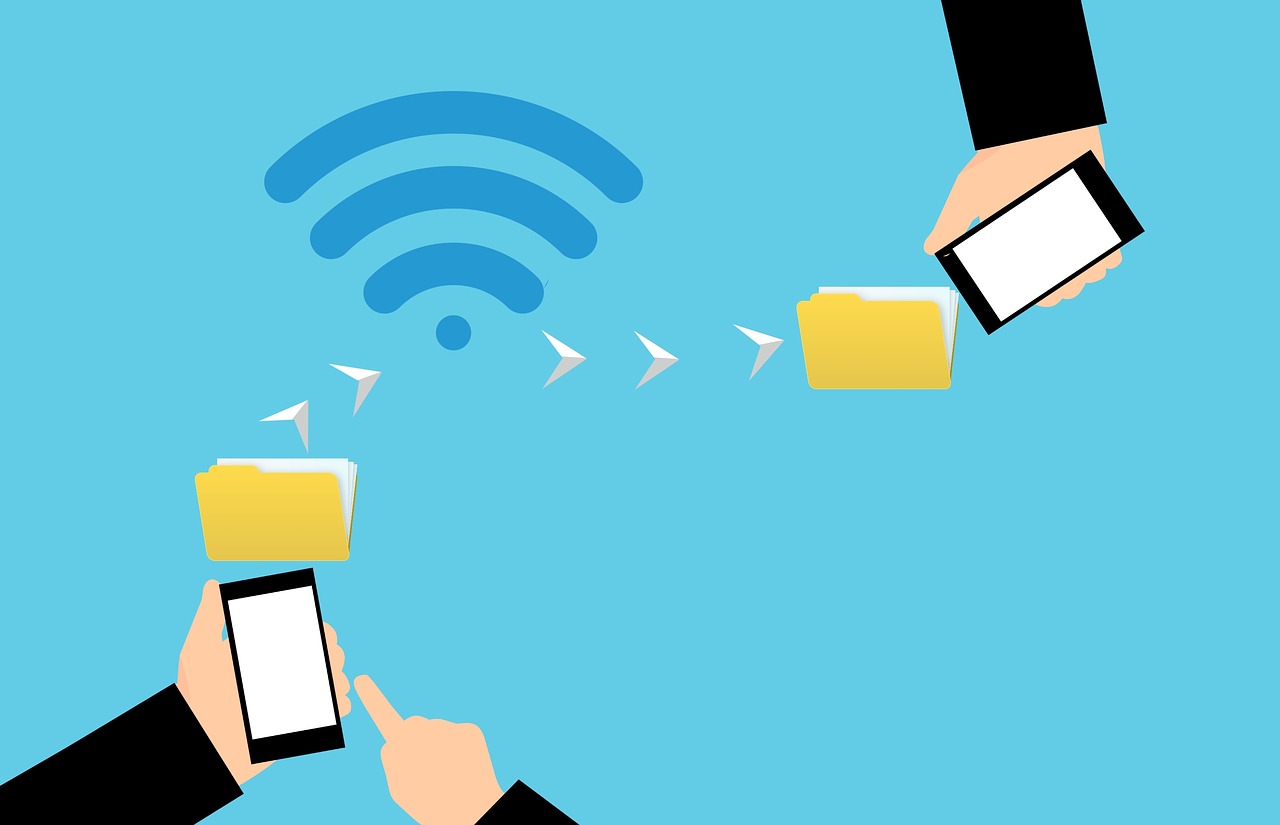Introduction
Welcome to our guide on how to turn on NFC (Near Field Communication) on your Android phone. If you’ve ever wondered about the small “NFC” logo you’ve seen on your phone or heard about it but aren’t sure what it does, you’re in the right place. NFC is a technology that allows devices to communicate with each other when they are in close proximity, usually within a few centimeters. It has become increasingly popular in recent years due to its convenience and versatility.
With NFC, you can quickly and easily transfer data, make contactless payments, or connect with other compatible devices, such as speakers or headphones. It’s like having a digital passport for your phone, enabling seamless interactions and unlocking a variety of features and possibilities. However, before you can take advantage of these benefits, you first need to ensure that your Android phone has NFC capabilities and that it is turned on.
In this guide, we will walk you through the process of checking if your Android phone has NFC and how to enable it if it does. We’ll also provide some troubleshooting tips if you encounter any issues along the way. So, whether you want to tap and pay at a store, share files between devices, or connect with compatible accessories, let’s get started on enabling NFC and harnessing its power on your Android phone.
What is NFC?
NFC stands for Near Field Communication, an advanced technology that allows devices to establish wireless communication by simply bringing them close together, typically within a few centimeters. It is similar to Bluetooth and Wi-Fi but operates at a much shorter range.
NFC technology relies on electromagnetic radio fields to enable communication between devices. It is often used for contactless transactions, data transfer, and device pairing. When two NFC-enabled devices come into proximity, they can exchange information and perform various actions with a simple tap or touch.
NFC technology has gained popularity due to its convenience and versatility. It is widely used in contactless payment systems, allowing users to make secure payments by tapping their smartphones or smartcards on payment terminals. This eliminates the need to carry physical cards or cash, making transactions quicker and more convenient.
In addition to payments, NFC can be utilized for a wide range of applications. It can be used to share contact information, photos, videos, or documents between NFC-enabled devices. It can also enable quick pairing and seamless connectivity between devices, such as connecting your smartphone to a Bluetooth speaker or pairing your smartwatch with your phone.
Furthermore, NFC technology has found its way into various industries and sectors. It can be used in healthcare for patient identification and tracking, in transportation for ticketing and access control, in marketing for promotional offers and loyalty programs, and in home automation for controlling smart devices.
Overall, NFC technology brings convenience, efficiency, and security to our everyday lives. It simplifies interactions between devices, enhances contactless payments, and enables seamless connectivity. As the technology continues to evolve, we can expect even more exciting applications and possibilities for NFC in the future.
Benefits of NFC
NFC (Near Field Communication) technology offers a variety of benefits that enhance the functionality and convenience of your Android phone. Let’s explore some of the key advantages of NFC:
- Contactless Payments: One of the major benefits of NFC is its use in contactless payment systems. By simply tapping your phone on a payment terminal, you can make secure transactions without the need for physical cards or cash. It saves time, provides a seamless payment experience, and eliminates the risk of card skimming or theft.
- Data Transfer: NFC allows you to quickly and wirelessly transfer various types of data between compatible devices. Whether it’s sharing photos, videos, contacts, or documents, you can easily exchange information with a simple tap or touch. This feature is ideal for sharing files with friends, colleagues, or even transferring content between your smartphone and other devices like tablets or laptops.
- Device Pairing: NFC simplifies the process of pairing and connecting devices. Whether you want to connect your smartphone to a Bluetooth speaker, pair it with wireless headphones, or sync it with a smartwatch, NFC makes the process quick and effortless. Just tap the NFC-enabled devices together, and they will establish a connection without the need for manual configuration.
- Access Control: NFC technology is widely used for access control systems. It allows secure and efficient entry to buildings, offices, or restricted areas by tapping an NFC-enabled security card or smartphone on the designated terminal. This eliminates the need for physical keys or swipe cards, providing a more convenient and secure access control solution.
- Smart Home Integration: NFC can be integrated with smart home automation systems to control various devices with a simple tap. For example, you can program an NFC tag to turn off lights, adjust the thermostat, or play your favorite music when you tap your phone on it. It adds convenience and automation to your everyday tasks, making your home smarter and more connected.
These are just a few of the many benefits that NFC technology brings to your Android phone. From contactless payments to seamless data transfer and device connectivity, NFC enhances your smartphone experience and opens up a world of possibilities. So, if your Android phone has NFC capabilities, make sure to take advantage of this versatile technology and explore its full potential.
Does My Android Phone Have NFC?
Before you can start using NFC on your Android phone, it’s important to verify if your device actually has NFC capabilities. Not all Android phones come equipped with NFC, especially older or lower-end models. Here are a few ways to determine if your Android phone supports NFC:
- Check the Device Specifications: The first step is to consult the specifications of your Android phone. This information can usually be found on the manufacturer’s website or in the user manual. Look for any mention of NFC support or “NFC-enabled” in the list of features.
- Look for the NFC Logo: Many newer Android phones that have NFC capabilities will display a small NFC logo on the back or possibly on the front of the device. The logo typically consists of three curved lines that resemble a Wi-Fi symbol, except with smaller curves.
- Search Online: If you’re unable to find the information from the device specifications or logo, you can search online for the specific model of your Android phone. Look for reviews or technical specifications that mention NFC support.
Once you have confirmed that your Android phone has NFC capabilities, you can proceed with enabling NFC and exploring its various applications. If your device does not have NFC functionality, unfortunately, you won’t be able to use the features and benefits that NFC offers.
It’s worth noting that even if your Android phone has NFC, it may not have all the features associated with NFC, such as support for contactless payments. This depends on the model and the manufacturer’s implementation of NFC. Checking the specific capabilities of NFC on your device will help you understand the full range of features that are available to you.
Now that you know how to determine if your Android phone has NFC, let’s move on to the next step: turning on NFC.
How to Check if Your Android Phone Has NFC
If you’re not sure whether your Android phone has NFC capabilities, don’t worry – there’s a straightforward way to check. Just follow these steps:
- Open the Settings App: Locate and tap on the Settings app on your Android phone. It is usually represented by a gear icon and can be found in your app drawer or home screen.
- Navigate to the Connections or Network & internet Section: In the Settings menu, scroll down until you find the “Connections” option or “Network & internet” option. Tap on it to access the connectivity settings.
- Look for NFC: Within the Connections or Network & internet section, search for the NFC option. It may be listed separately as “NFC” or grouped under a broader category like “More connection settings” or “Wireless & networks.”
- Tap on NFC: Once you locate the NFC option, tap on it to access the NFC settings page.
- Check the NFC Status: On the NFC settings page, you will find the status of NFC on your Android phone. If NFC is available and currently turned off, you will have the option to enable it by tapping on the toggle switch or checkbox next to NFC.
If you can’t find the NFC option in the settings menu, it is likely that your Android phone does not have NFC capabilities. In this case, you won’t be able to use NFC-related features such as contactless payments or file transfer.
Keep in mind that the exact steps may vary slightly depending on the make and model of your Android phone and the version of Android operating system you are using. However, the general process should remain similar.
Now that you have checked if your Android phone has NFC capabilities, let’s move on to the next step: learning how to turn on NFC.
How to Turn On NFC on Android Phone
Enabling NFC on your Android phone is a simple process that can be done in just a few steps. Here’s how to do it:
- Open the Settings App: Locate and tap on the Settings app on your Android phone. It is usually represented by a gear icon and can be found in your app drawer or home screen.
- Locate and Select the “Connected devices” or “Network & internet” Option: In the Settings menu, scroll down until you find the “Connected devices” option or “Network & internet” option. Tap on it to access the connectivity settings.
- Enable NFC: Within the “Connected devices” or “Network & internet” section, look for the NFC option. Once you find it, tap on the toggle switch or checkbox next to NFC to turn it on. It may be labeled as “NFC,” “Android Beam,” or something similar depending on your Android version and device manufacturer.
- Customize NFC Settings (Optional): After turning on NFC, you may have the option to customize the NFC settings according to your preferences. This includes options such as Android Beam, NFC tags, or tap and pay settings. Explore these options as desired, but be aware that some settings may require additional third-party apps or services.
Once you have followed these steps and enabled NFC on your Android phone, you are ready to take advantage of the various NFC features and functionalities. It’s time to explore contactless payments, data transfer, device pairing, and more using NFC technology.
Remember, the exact steps and the location of the NFC settings may vary slightly depending on the make and model of your Android phone and the version of Android operating system you are using. However, the general process and terminology should remain similar.
Now that NFC is enabled on your Android phone, you can start using this powerful technology to simplify your everyday tasks and enjoy the convenience it brings.
Step 1: Open the Settings App
The first step to turning on NFC on your Android phone is to open the Settings app. The Settings app allows you to access and customize various settings on your device.
Here’s how you can open the Settings app:
- Locate the Settings app icon on your Android device. It is usually represented by a gear or wrench icon.
- You can find the Settings app in the app drawer or on your home screen. If it’s not immediately visible, you can swipe down from the top of the screen and type “Settings” in the search bar to locate it.
- Once you have located the Settings app icon, tap on it to open the app.
After opening the Settings app, you will be able to access a wide range of settings and options that allow you to customize and control your Android device.
Keep in mind that the appearance and organization of the Settings app may vary depending on the make and model of your Android phone and the version of the Android operating system you are using. However, the Settings app is a core component of the Android system and is a universal way to access device settings on most devices.
Now that you have successfully opened the Settings app, you can move on to the next step in enabling NFC on your Android phone.
Step 2: Locate and Select the “Connected devices” or “Network & internet” Option
Once you have opened the Settings app on your Android phone, the next step in turning on NFC is to locate and select the “Connected devices” or “Network & internet” option. This section contains various connectivity settings that allow you to configure and manage your device’s network connections.
Here’s how you can find and select the “Connected devices” or “Network & internet” option:
- Within the Settings app, scroll through the list of available options until you find “Connected devices” or “Network & internet”. Tap on this option to access the corresponding settings.
- In some Android devices, these options may be grouped under a broader category like “Wireless & networks”. If that’s the case, be sure to select the “Wireless & networks” option, and then navigate to the “Connected devices” or “Network & internet” section.
- Alternatively, you may find the “Connected devices” or “Network & internet” option directly in the main settings menu, without any sub-categories.
Remember, the naming and organization of these options may vary slightly depending on the make and model of your Android phone and the version of the Android operating system you are using. However, the essence of these settings is to manage your device’s connectivity and network-related configurations.
Once you have located and selected the “Connected devices” or “Network & internet” option, you are one step closer to enabling NFC on your Android phone. Continue to the next step to learn how to turn on NFC and unlock its benefits.
Step 3: Enable NFC
After locating the “Connected devices” or “Network & internet” section in the Settings app on your Android phone, the next step is to enable NFC. Once enabled, you can start using NFC-related features and functionalities on your device.
Here’s how you can enable NFC on your Android phone:
- Within the “Connected devices” or “Network & internet” section, look for the option that mentions NFC. It may be labeled as “NFC,” “Android Beam,” or something similar, depending on your device and Android version.
- Tap on the toggle switch or checkbox next to NFC to enable it. This action will activate the NFC functionality on your device.
- Depending on your Android phone, you may be prompted to confirm the action or provide any necessary permissions for NFC to function correctly. Follow the on-screen prompts and accept any requests if prompted.
Once you have enabled NFC, you can now enjoy the various benefits and features that NFC offers. Whether it’s contactless payments, data transfer, device pairing, or other NFC applications, your Android phone is now ready to take advantage of these capabilities.
It’s worth noting that the exact appearance and location of the NFC option may vary depending on the make and model of your Android device and the version of Android you are using. However, the general process of enabling NFC remains consistent across most devices.
Congratulations! You have successfully enabled NFC on your Android phone. You can now proceed to customize the NFC settings if desired or explore the different ways you can utilize NFC on your device.
Step 4: Customize NFC Settings (Optional)
Once you have enabled NFC on your Android phone, you may have the option to customize the NFC settings according to your preferences. Customizing these settings allows you to optimize your NFC experience and tailor it to your specific needs.
Here are some customization options you may find in the NFC settings on your Android phone:
- Android Beam: Android Beam allows you to share content, such as contacts, photos, or web pages, with other NFC-enabled devices. You can customize the settings for Android Beam, such as enabling or disabling it, specifying the types of content you want to share, or adjusting the beaming functionality.
- NFC Tags: NFC tags are small, programmable stickers or devices that can trigger specific actions when your phone interacts with them. In the NFC settings, you may find options to manage and program NFC tags. This allows you to assign specific actions, like opening an app or adjusting settings, to different NFC tags.
- Tap and Pay: If your Android phone supports contactless payments, you can use NFC for tap-to-pay transactions. In the NFC settings, you can configure the tap and pay settings, link payment apps, and set a default payment app for contactless payments.
- Other Settings: Depending on your device and Android version, you may find additional NFC-related settings or options. These can include options to enable or disable specific NFC functionalities, adjust NFC polling modes, or manage trusted devices and connections.
It’s important to note that some customization options may require additional third-party apps or services. These apps can enhance the capabilities of NFC on your Android phone and provide more advanced features. If you decide to use third-party apps, be sure to download them from trusted sources and follow the instructions provided by the app developers.
Remember, customizing NFC settings is optional, and you can leave them as default if you don’t need to make any changes. However, exploring and adjusting these settings can enhance your NFC experience and make it more tailored to your preferences.
Now that you have learned how to customize the NFC settings, you are ready to fully utilize the power of NFC on your Android phone. Enjoy the convenience, efficiency, and versatility that NFC brings to your device!
Troubleshooting NFC Issues
While NFC (Near Field Communication) technology is generally reliable, you may occasionally encounter issues or difficulties while using NFC on your Android phone. If you are experiencing problems with NFC functionality, here are some troubleshooting steps you can take to resolve common issues:
- Ensure NFC is Enabled: Double-check that NFC is enabled in your phone’s settings. Make sure the NFC toggle switch is turned on.
- Check for Physical Obstructions: Ensure that there are no physical obstructions, such as cases or covers, blocking the NFC antenna on your phone. Remove any interfering objects and try again.
- Clean the NFC Area: Clean the NFC area on your phone by wiping it gently with a soft, lint-free cloth. Dust, dirt, or fingerprints may interfere with NFC functionality.
- Restart Your Phone: Restarting your phone can often resolve temporary glitches or software issues that may be affecting NFC. Power off your phone, wait a few seconds, and then power it back on.
- Check for System Updates: Ensure that your Android phone is running the latest version of the operating system. System updates often include bug fixes and improvements that can help resolve NFC-related issues.
- Check for App Updates: If you are experiencing issues with a specific NFC-enabled app, check for updates for that app in the Google Play Store. Developers frequently release updates to address bugs and compatibility issues.
- Reset NFC Settings: If none of the above steps work, you can try resetting the NFC settings on your phone. Go to the NFC settings in your phone’s settings app and tap on the option to reset or reinitialize NFC. Note that this action may clear any saved preferences or customized settings related to NFC.
- Contact Customer Support: If you have tried all the troubleshooting steps and are still experiencing issues with NFC on your Android phone, reach out to the customer support of your device manufacturer or service provider for further assistance. They will be able to provide specific guidance based on your device and help you resolve any technical issues.
Remember that NFC performance can vary depending on the hardware, software, and external factors. Sometimes, certain NFC features may not be supported on your device or in your region. It’s always a good idea to consult the user manual or support documentation for your specific device model for more information on NFC capabilities and limitations.
By following these troubleshooting steps, you can increase the chances of resolving NFC issues and getting the most out of NFC technology on your Android phone.
Conclusion
Congratulations! You’ve now learned how to turn on NFC (Near Field Communication) on your Android phone. NFC technology provides a range of benefits, including contactless payments, data transfer, device pairing, and more. By enabling NFC on your Android phone, you open up a world of possibilities and enhance the convenience and functionality of your device.
In this guide, we covered the basics of NFC, its benefits, and how to determine if your Android phone has NFC capabilities. We walked you through the step-by-step process of checking if your device has NFC, enabling NFC in the settings app, and customizing NFC settings to fit your preferences.
Additionally, we provided troubleshooting tips for resolving common NFC issues, ensuring that you can make the most of NFC technology without any technical difficulties. Remember, if you encounter any persistent issues, don’t hesitate to seek assistance from your device manufacturer or service provider.
Now that you have a good understanding of NFC and how to use it on your Android phone, it’s time to explore the various applications and discover new ways to improve your daily life using this powerful technology. Whether you want to make contactless payments, share files with friends, or seamlessly connect with compatible devices, NFC is here to streamline and enhance your digital experiences.
Enjoy the convenience, efficiency, and versatility that NFC brings to your Android phone, and make the most of this advanced communication technology!









